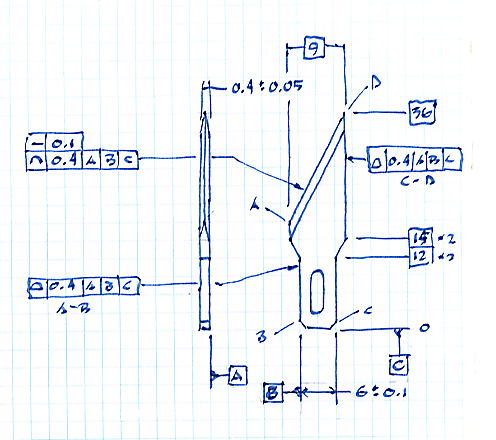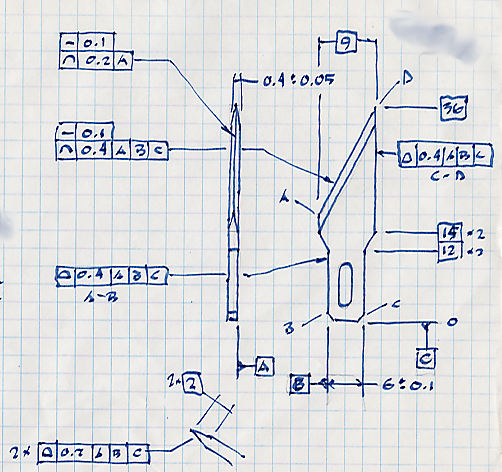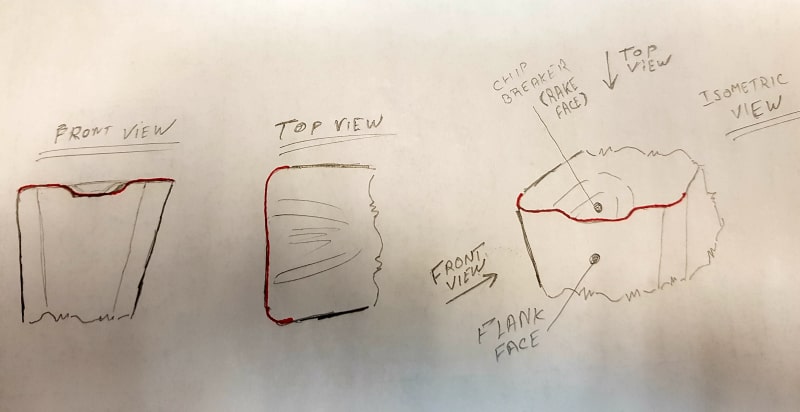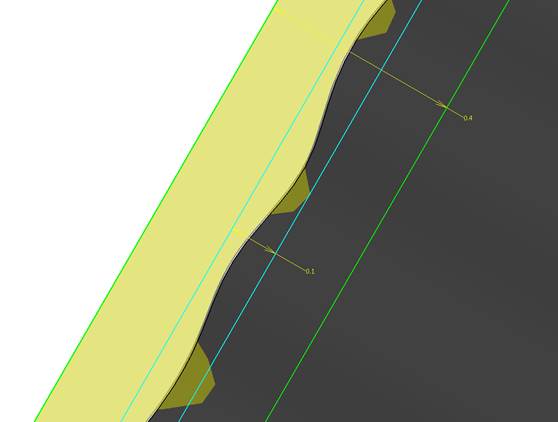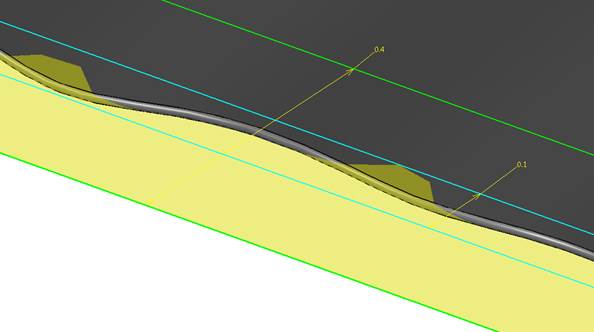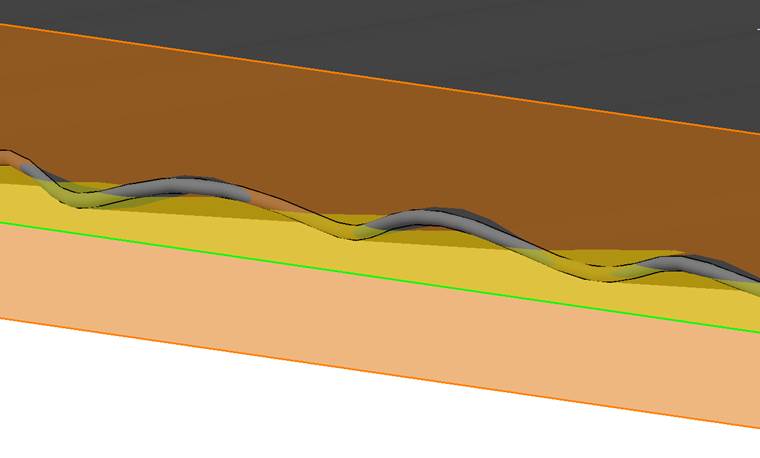Searching the forum for information regarding application of GD&T on edges, i found thread1103-310372, where it seems that most participants agreed that edges (including those that connect surfaces at an angle smaller than 90 deg.) can legally be used as datums (recommended or not - is a separate question).
In relation to ASME Y14.5 2009, my question is: could the two edges which the OP of that thread intended to assign as datums, be controlled for orientation between each other by the use of perpendicularity control? If i was asked this question my answer would be "probably not" because the definitions in chapter 6 seem to only mention a surface, center plane, or an axis as the subjects for orientation controls. On the other hand, maybe the fact that it's not mentioned in the definitions, doesn't mean it is not allowed? As for inspection - i don't think it would be too difficult with an optical comperator or a microscope (simulating a tangent line to the datum feature edge and then finding the size of the zone within which the other edge lies).
For approaching this issue, please assume that the uncertainty related to deburring/ rounding size removed from the equation, since the rounding/deburring are small enough and tightly controlled.
In relation to ASME Y14.5 2009, my question is: could the two edges which the OP of that thread intended to assign as datums, be controlled for orientation between each other by the use of perpendicularity control? If i was asked this question my answer would be "probably not" because the definitions in chapter 6 seem to only mention a surface, center plane, or an axis as the subjects for orientation controls. On the other hand, maybe the fact that it's not mentioned in the definitions, doesn't mean it is not allowed? As for inspection - i don't think it would be too difficult with an optical comperator or a microscope (simulating a tangent line to the datum feature edge and then finding the size of the zone within which the other edge lies).
For approaching this issue, please assume that the uncertainty related to deburring/ rounding size removed from the equation, since the rounding/deburring are small enough and tightly controlled.

